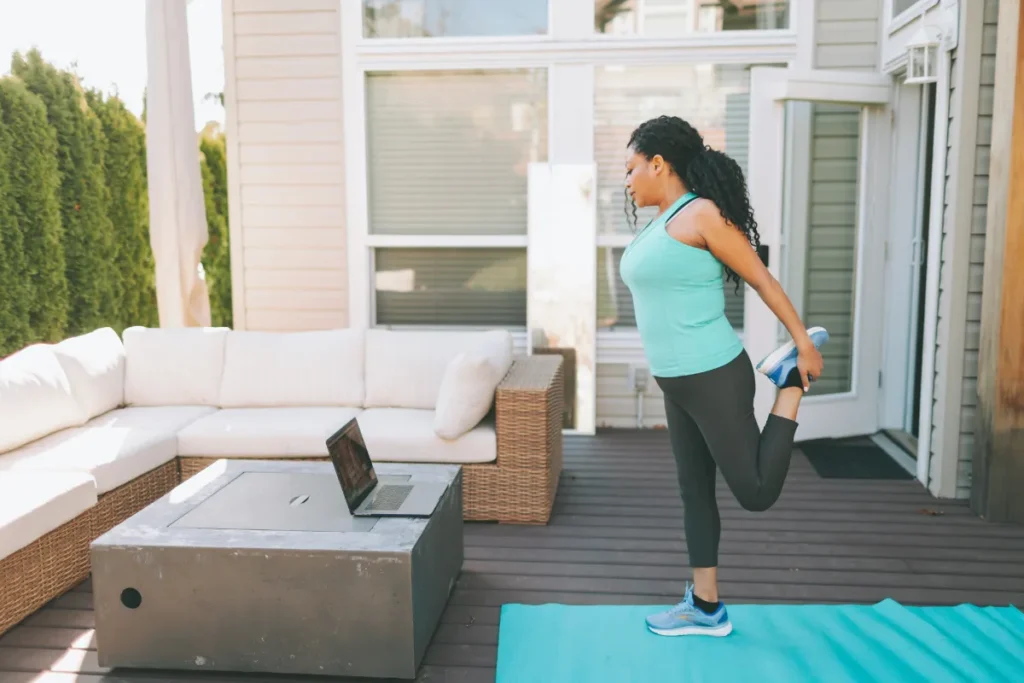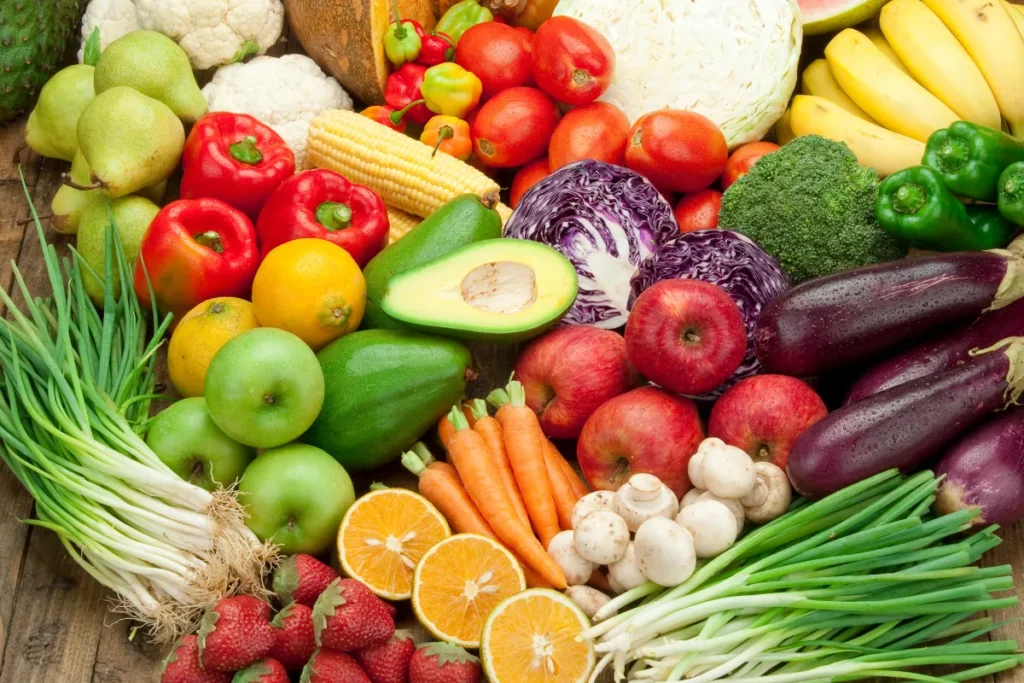If you’ve been on a weight loss journey for months without seeing progress on the scale, you might have reached a weight loss plateau. Michelle Hyman, M.S., R.D., C.D.N., a registered dietitian at Simple Solutions Weight Loss, reassures that plateaus are a normal part of the weight loss process and indicate a need for changes in your eating and physical activity.
Overcoming a weight loss plateau requires smart strategies. It’s crucial to reassess your goals and routines to ensure you are on the right track. Consider the possibility that you may already be at a healthy weight or lack a clear plan to reach your target. To break through the plateau, visualize yourself achieving your defined goals and note the positive feelings associated with success, suggests Josh Cox, a certified personal trainer at Anytime Fitness in Santa Rosa, CA.
To assist you in overcoming this hurdle, we sought advice from weight loss experts who provide practical solutions for making concrete changes, helping you shed those last stubborn pounds.
1. Define your goals.
Cox advises against starting a workout plan with a vague goal like “getting in shape,” considering it too broad. To break through a weight loss plateau, he recommends embracing a SMART goal approach—ensuring goals are Specific, Measurable, Attainable, Relevant, and Time-bound. For example, setting a clear objective such as “I intend to lose 10 pounds before July 1 by implementing action steps X, Y, and Z.” Clearly defining your end goal and documenting it is crucial. If you find it challenging to create realistic goals, enlisting the help of a personal trainer or nutritionist can be advantageous.
2. Amp up your fitness.

If your workout routine has become quite routine, consider increasing the intensity and introducing variety to prevent stagnation. According to Bonnie Taub-Dix, R.D.N., the creator of BetterThanDieting.com and author of Read It Before You Eat It, a weight loss plateau is not just about the number on the scale; it encompasses body shape, muscle mass, and overall well-being. However, she advises against unrealistic exercise regimens of three hours a day. Instead, if you’re accustomed to a particular workout, such as walking, consider trying something different like using an elliptical machine or incorporating dance into your routine.
3. Find a weight loss buddy.
“Given that motivation is a fleeting emotion, expecting consistent motivation is unrealistic,” notes Justin Seedman, an ACE-certified behavior change specialist and personal trainer in Pembroke Pines, FL. He recommends creating accountability by involving someone else, such as a coach or partner. Cox adds that connecting with individuals who “ride the same wavelength” and understand your struggles on a deeper level can be beneficial. Joining group workout classes with people sharing similar fitness goals or engaging in a social media group for mutual support can provide encouragement as you collectively pursue achievements like conquering that first 5K.
4. Practice portion control.
Excessive eating can be a sign of hitting a weight loss plateau, and even with nutritious foods, it’s possible to consume too many calories. Dr. Hyman advises caution with healthy fats like nuts, olive oil, and avocado, emphasizing the importance of paying attention to serving sizes. While these fats are beneficial for heart health, it’s crucial to be mindful, check nutrition labels for serving sizes, and measure portions with cups and spoons to avoid overconsumption. For instance, limit peanut butter to two tablespoons instead of five and stick to 15 almonds instead of two handfuls. Dr. Hyman suggests using smaller plates, around 8 to 9 inches in diameter, and immediately portioning out single-serving snacks when faced with tempting family-sized packages.
5. Stop banking calories.

Certain dieters may opt for a modest breakfast with a granola bar and have vegetable soup for lunch, only to indulge excessively at dinner. Dr. Hyman advises against undereating during the day and emphasizes the importance of not saving calories. Rather than skimping on meals, he suggests fueling up in the morning. Suzanne Fisher, M.S., R.D., L.D.N., a registered dietitian based in Cooper City, FL, and the founder of Fisher Nutrition Systems, suggests a hearty breakfast option: a whole-wheat wrap filled with scrambled eggs, avocado, black beans, and arugula.
6. Pack healthy snacks.
An effective strategy to overcome a weight loss plateau is to plan ahead with emergency snacks. Dr. Hyman recommends this approach, noting that when you’re extremely hungry, it’s challenging to make healthy choices and control portions. To address this, he suggests packing a nutritious snack if you anticipate eating lunch or dinner later than usual. Some healthy snack options include protein energy bites, Greek yogurt with berries and nuts, hummus with vegetable sticks, or a smoothie. It’s crucial that your snack contains a balance of protein, carbohydrates, and fat to help keep you feeling full.
7. Limit alcohol.
Going out for “just a few drinks” can tack on a ton of extra calories. Cutting back can help you start losing weight instead of gaining. “If you have a glass of wine every night and two glasses on a weekend, then maybe just save your alcohol for the weekend or a special night going out during the week,” Taub-Dix says. She also suggests changing your alcohol, like swapping your usual beer for a light version. “It’s helpful without giving up alcohol all together,” she says.
8. Track your meals.
Identifying the reasons behind a weight loss plateau becomes more apparent when you document your dietary choices, making it harder to overlook those occasional handfuls of candy or afternoon lattes at work. Suzanne Fisher, a strong proponent of meal planning apps, emphasizes their reliability, stating, “They provide a realistic view of what you are eating on a daily basis. You might overlook those calories if you’re not reminded while tracking them.” Additionally, she recommends tracking your exercise to estimate the calories burned versus consumed. To streamline this process, consider downloading a weight-loss app to log your daily activities and meals.
9. Drink water before meals.

Consuming a bottle of water before dinner has been found to be effective in reducing calorie intake, as reported in a study published in Obesity. Participants who drank approximately 16.9 ounces, or around two cups, of water before each meal experienced a weight loss of about 4.5 pounds more over 12 weeks compared to those who didn’t prioritize water intake. The mechanism behind this phenomenon lies in the water helping the stomach feel more satisfied at the beginning of the meal, despite having zero calories.
10. Make nutritious meals.
Consider visualizing each lunch and dinner plate as a pie chart, suggests Hyman. Strive to allocate half of the plate to non-starchy vegetables and water-rich fruits, a quarter to lean protein, and the remaining quarter to healthy carbohydrates, such as quinoa, brown rice, or sweet potato. According to Hyman, this approach aids in satiety and encourages a sensible portion of starch. Rather than imposing restrictions, such as going gluten-free or low-carb, focus on enhancing the nutritional value of your meals. Hyman advises, “Concentrate on incorporating all the healthy foods you can into each meal rather than fixating on the foods you ‘shouldn’t’ have.”
11. Don’t “cheat” all weekend.
“Treating each weekend as a two-day unrestricted period can hinder your progress,” advises Hyman. Instead, adhere to the routine that proves effective during the week to stay on the right path. You can consider incorporating a few extra steps, taking advantage of the potentially greater available time on weekends, and grant yourself the freedom to share dessert or have a glass of wine with dinner. This perspective serves as a reminder that there are no strict limitations, promoting a balanced and sustainable approach to your lifestyle choices.
12. Cut back on carbs.
While brown rice, sweet potatoes, oatmeal, and whole-wheat pasta provide complex carbohydrates, vitamins, minerals, and dietary fiber, our super-sized culture makes it easy to overindulge. An extra half cup of brown rice in that buddha bowl at lunch equals a bonus 125 calories, which works out to an extra 13 pounds over the course of a year. “Many of us are used to eating large portions of carbs in particular, especially when ordering take-out or dining at restaurants,” Hyman says. “As a gut check until you can eyeball a single serving, use measuring cups to stick to the right size of starch.”
13. Bulk up on veggies.

“Feeling full on fewer calories becomes challenging without an adequate intake of fiber in your diet,” notes Hyman. Increase your fiber intake at every meal by including more non-starchy vegetables like carrots, celery, cauliflower, asparagus, and mushrooms. “Set daily targets for consuming whole fruits [instead of juice] and non-starchy vegetables. Planning to incorporate two pieces of fruit and four servings of vegetables each day can assist you in organizing your meals and snacks effectively,” she suggests.
14. Employ non-food rewards.
If your usual pat-on-the-back for rocking that Pilates class is an extra brownie each night before bed, you might want to reconsider. Dangling a “carrot” (aka treat) for extra motivation is a smart move, Cox says, but try something that isn’t edible. “Set small goals for yourself, say, ‘I will add two more servings of vegetables to my meals each day this week,’ and choose a non food-related reward you get once you meet that goal,” he suggests. Some non-food rewards include new workout gear, a massage, a tickets to a concert, or new kitchen tools.
15. Avoid elimination diets.
If you’re considering low-carb versus low-fat, we have a spoiler alert: It doesn’t matter one ounce which you pick. Stanford University researchers found that people tend to lose the same amount of weight on a carb-restricted and fat-reduced diet—even when their genetics suggest they might metabolize one macronutrient better than the other. The resounding lesson from their findings: Choose quality rather than counting every last calorie or gram of carbohydrate or fat.
16. Manage stress.
Experiencing stress can contribute to weight gain or a weight loss plateau. According to Taub-Dix, “When you’re stressed, it can lead to erratic eating patterns and weight gain.” To counter this, she suggests managing stress as it can not only prevent stress-induced eating but also contribute to a happier life, irrespective of weight loss goals. Activities such as meditation, yoga, and seeking therapy are recommended to alleviate stress.
17. Get more sleep.

Experiencing hunger when tired is a common phenomenon. According to Taub-Dix, “We often mistake fatigue for hunger, and when we truly need rest, we reach for a snack.” She highlights that staying up for extended periods might result in increased eating frequency instead of prioritizing much-needed rest. To improve the quality and duration of your sleep, consider using earplugs or a white noise machine. Persistent sleep issues may be linked to various health conditions such as thyroid problems, stress, or obesity. If you encounter difficulty sleeping, consulting a doctor is advisable.
18. Take everything one step at a time.
According to Seedman, cultivating self-awareness and self-discipline is essential for successful weight loss. If you feel you’re not strong in these areas, no need to worry. Seedman suggests understanding your triggers and actively avoiding them. If certain situations lead to overeating or unhealthy choices, consider rearranging your environment and schedule. Instead of opting for quick-fix schemes, Seedman emphasizes the importance of realizing that genuine success, achievements, and lasting results demand a degree of sacrifice, patience, and hard work.

